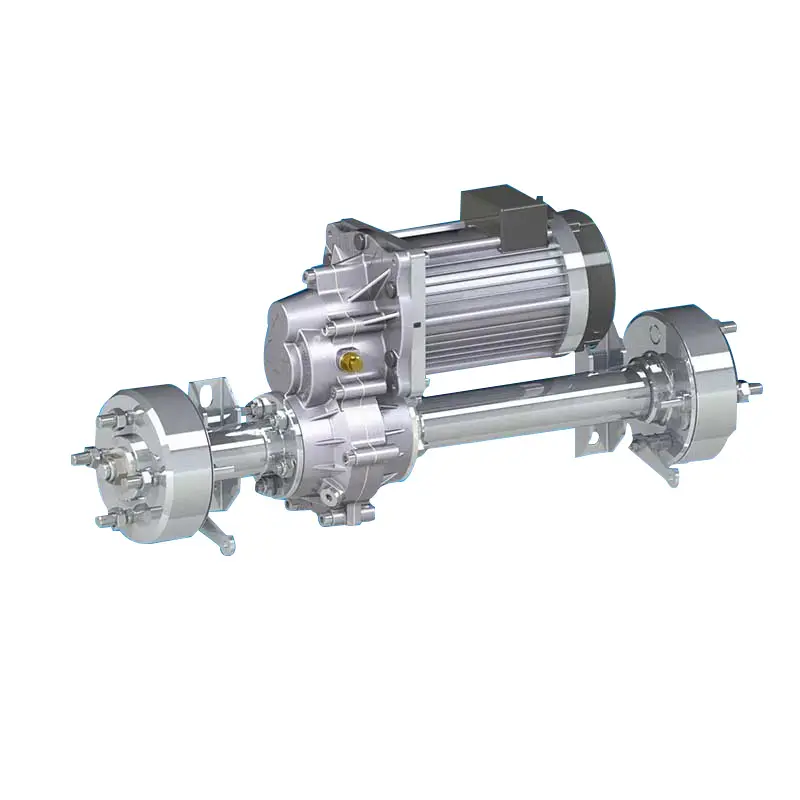What steps should be included in the regular maintenance of the drive axle of a clean vehicle?
Regular maintenance of the drive axle of a clean vehicle is essential to ensure vehicle performance and extend its service life. Here are some key steps that form the core of the maintenance of the drive axle of a clean vehicle:
1. Cleaning work
First, the outside of the drive axle needs to be thoroughly cleaned to remove dust and dirt. This step is the beginning and foundation of maintenance, ensuring that subsequent inspections and maintenance work can be carried out in a clean environment
2. Check the vents
Cleaning and ensuring that the vents are unobstructed is critical to prevent moisture and contaminants from entering the interior of the drive axle
3. Check the lubricant level
Regularly check the lubricant level in the drive axle to ensure that it is within the appropriate range. Lubricants are essential for reducing friction, dissipating heat and preventing rust
4. Change the lubricant
Regularly change the lubricant of the main reducer according to the vehicle’s usage and the manufacturer’s recommendations. This helps maintain the good working condition of gears and bearings and reduces wear
5. Check the fastening bolts and nuts
Frequently check the fastening bolts and nuts of the drive axle components to ensure that they are not loose or falling off, which is very important to prevent component damage and ensure driving safety
6. Check the half-axle bolts
Since the half-axle flange transmits a large torque and bears impact loads, the fastening of the half-axle bolts must be checked frequently to prevent breakage due to loosening
7. Cleanliness check
According to the DB34/T 1737-2012 standard, the cleanliness of the drive axle assembly needs to be checked to ensure that it meets the specified cleanliness limits and assessment methods
8. Check and adjust the clearance
Check the meshing clearance of the main and passive bevel gears and make necessary adjustments. At the same time, check and tighten the main and passive bevel gear flange nuts and the differential bearing cover fastening nuts
9. Check the braking system
Check the braking system of the drive axle, including the wear of the brake shoes and the brake air pressure. Ensure the normal operation of the brake system to ensure driving safety
10. Check the wheel hub bearings
Check the preload torque and wear of the wheel hub bearings, and adjust or replace them if necessary to ensure the smooth operation of the wheels
11. Check the differential
Check the working condition of the differential, including the clearance between the planetary gear and the half-shaft gear and the preload torque of the bearings, to ensure the normal operation of the differential
By following the above steps, you can ensure that the drive axle of the cleaning vehicle is properly maintained regularly, thereby improving the reliability and safety of the vehicle. Regular maintenance can not only extend the service life of the drive axle, but also improve the working efficiency of the cleaning vehicle.
After regular maintenance, how to determine whether the drive axle needs a deeper inspection?
After regular maintenance, to determine whether the drive axle needs a deeper inspection, you can refer to the following criteria:
Abnormal noise diagnosis:
If the drive axle makes abnormal noises while driving, especially when the sound characteristics are obvious when the vehicle speed changes, this may indicate gear damage or improper matching clearance. For example, if there is a continuous “wow” sound when accelerating and the bridge housing is hot, it may be that the gear meshing clearance is too small or lacks oil
Temperature check:
Check the temperature of the drive axle. If the bridge housing temperature rises abnormally after driving a certain mileage, it may mean insufficient oil, oil quality problems or too tight bearing adjustment. If the bridge housing feels hot or hot everywhere, it may be that the gear meshing clearance is too small or there is a lack of gear oil
Leakage check:
Check the oil seal and bearing seal of the drive axle. If oil leakage or oil seepage is found, further inspection and repair may be required
Dynamic balance test:
Perform a dynamic balance test to evaluate the stability and balance of the drive axle at high speed
Load capacity test:
Test the load capacity of the drive axle through a loading test to ensure that it can withstand the expected maximum load
Transmission efficiency test:
Measure the input and output speed and torque, calculate the transmission efficiency of the drive axle, and evaluate its energy conversion efficiency
Noise test:
Under the specified environment, the drive axle is tested for noise to evaluate its noise level during normal operation
Temperature test:
The operating temperature of the drive axle is monitored and recorded in real time through equipment such as temperature sensors and infrared thermal imagers
Appearance inspection:
The appearance of the drive axle is carefully inspected by visual and tactile means to ensure that there is no obvious damage, cracks or deformation
Dimension measurement:
Use precision measuring tools to measure the dimensions of the drive axle to confirm whether the parts meet the scrap standard
If any of the above inspection results are abnormal, it indicates that the drive axle may need more in-depth inspection and repair. These inspection items can help determine whether the drive axle is in good condition or whether further professional diagnosis and repair are required.
Post time: Dec-20-2024


